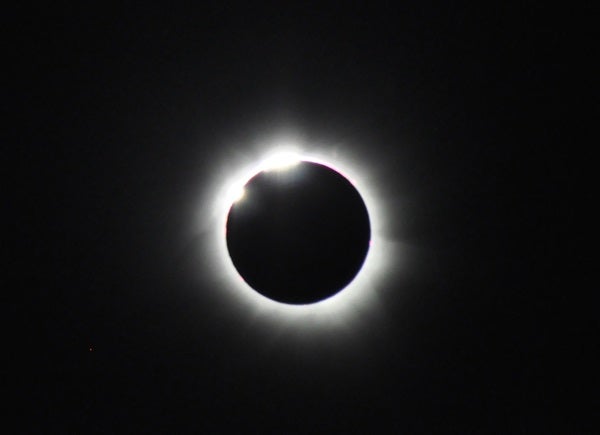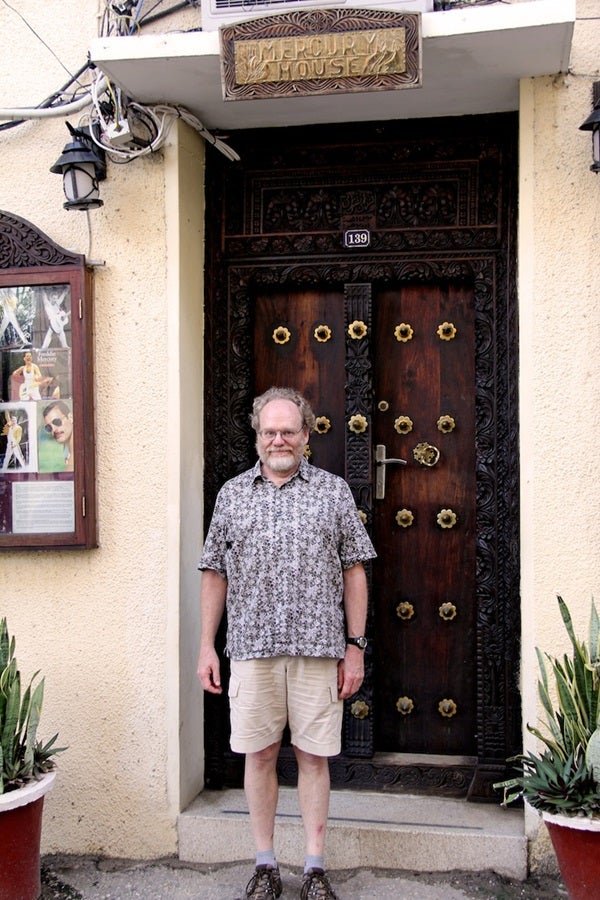This article originally appeared in the June 2014 issue of Astronomy.
Fourteen seconds may not sound like a lot, but it was all the incentive I needed to traipse halfway around the world. Along with about 30 other eclipse enthusiasts, I traveled to Kenya to see the Moon briefly obscure the Sun on November 3, 2013. Melita Thorpe of MWT Associates led this East Africa expedition to witness totality and experience the region’s grandeur.
Our adventure got underway October 31, the day after we arrived in Nairobi following a nine-hour flight from London. A tour of Kenya’s largest city included visits to the beautiful estate of Karen Blixen (who authored Out of Africa and several other books) and the Nairobi National Museum, where we saw fossils of some of the earliest humans and their immediate ancestors.
The next day, we drove north to the Treetops Hotel. Along the way, we saw plenty of exotic animals (at least to those who call North America home): elephants, giraffes, antelopes, baboons, warthogs, and more. The hotel sits adjacent to an illuminated water hole and salt deposits — magnets at night for the area’s abundant wildlife. A family of more than a dozen elephants entertained us for more than an hour.
The day before the eclipse, we traveled to the Mount Kenya Safari Club, which sits on the equator. Although the mountain — Africa’s second tallest — remained hidden in clouds during our brief stay, the club offered game drives and other attractions. I took advantage of the opportunity to stand with one foot in Earth’s Northern Hemisphere and one in the Southern Hemisphere.
Sun, sand, and storms
Eclipse day started with promise under partly cloudy skies at Mount Kenya. The forecast for our site looked good as we boarded three chartered planes for a two-hour flight north to Sibiloi National Park. The eclipse’s center line ran through the park, which lies on the eastern shore of Lake Turkana near where scientists discovered some of the earliest human fossils.
With high temperatures and only scattered clouds, we sought shade while waiting for the Moon to take its first bite of the Sun. That occurred right on schedule at 4:13 p.m. Unfortunately, our high hopes soon started to dim. A storm was brewing to the north and approaching the Sun in the western sky. Although a few raindrops started to fall, that was the least of our worries. Roughly 20 minutes after first contact, several of us noticed a wall of sand heading in our direction. Photographers barely had time to cover their cameras before the sandstorm hit, and it raged for 10 to 15 minutes.
But our troubles weren’t over. Once the dust settled, clouds hid the Sun. Although the sky wasn’t completely overcast, the chances of seeing totality looked bleak. The sky below the Sun, however, put on a spectacular display of anticrepuscular rays. These rays — shafts of light created when sunlight passes through gaps in the clouds below the Sun’s position — appeared especially sharp thanks to the shrinking light source (the solar crescent) behind the clouds.
But the clouds in front of the Sun didn’t budge. The anticrepuscular rays faded and then disappeared during the 14 seconds of totality, only to return just as strong afterward. Totality itself was the darkest of any of the 11 total solar eclipses I have seen. The flights back to Nairobi took us above the clouds, where we saw the eclipse’s final partial phases and a colorful sunset.
Magnificent Masai Mara
After a one-night layover in Nairobi, our group boarded a short flight to the Masai Mara. This vast area on Kenya’s southern border is home to a rich variety of wildlife, and our two days there helped us forget that we missed seeing totality — or at least softened the blow.
During three long game drives, we saw thousands of wildebeests grazing the grasslands, with smaller numbers of buffaloes, elephants, gazelles, giraffes, impalas, zebras, and other four-legged critters. Every visit to the Mara River brought sightings of hippos and crocodiles patrolling the warm waters. And the bird life — from ostriches to Marabou storks to vultures and eagles — was no less impressive.
But the most exciting sights were the predators. We saw hyenas, cheetahs, and lions. One lioness was nursing a trio of two-week-old cubs; the older male lions in the area seemed content to rest.
After dark, hippos and elephants wandered through Governors’ Camp, where we spent our two nights in large, luxurious tents. The dark skies beckoned us to view the starry canopy, which, from our location near the equator, stretched nearly from the North to South Celestial Pole. Camp guides kept an eye out for any unwanted visitors.
On our final morning in the Masai Mara (November 6), we rode in a hot-air balloon to view the animals from above. The unique perspective brought sightings of vast herds of animals as well as of a baby giraffe and a leopard — our only sighting of the elusive big cat.
Once we returned to camp, we packed up for our next destination. Some in our group extended their game viewing with a trip to Tanzania. But most of us opted for rest and relaxation on Zanzibar, an Indian Ocean island not far off the African mainland.
When not lounging on sandy beaches or dodging raindrops (it is the Tropics, after all), we toured the island. At a large spice plantation, we saw how workers cultivate allspice, peppercorn, cinnamon, nutmeg, and vanilla. The plantation also grows coconuts, grapefruit, and oranges. Of course, we got to sample (and purchase) the products.
After the plantation, we traveled to Stone Town, the island’s largest city. Our tour included visits to old slavery sites, the city market, and a walk through the town’s narrow streets. A highlight for me came at the end of the walking tour, when we saw the house where Freddie Mercury grew up. The late Mercury, lead singer of the rock band Queen, is arguably Zanzibar’s most famous native son. It was a great way to wrap up an unforgettable 10 days in Africa.











